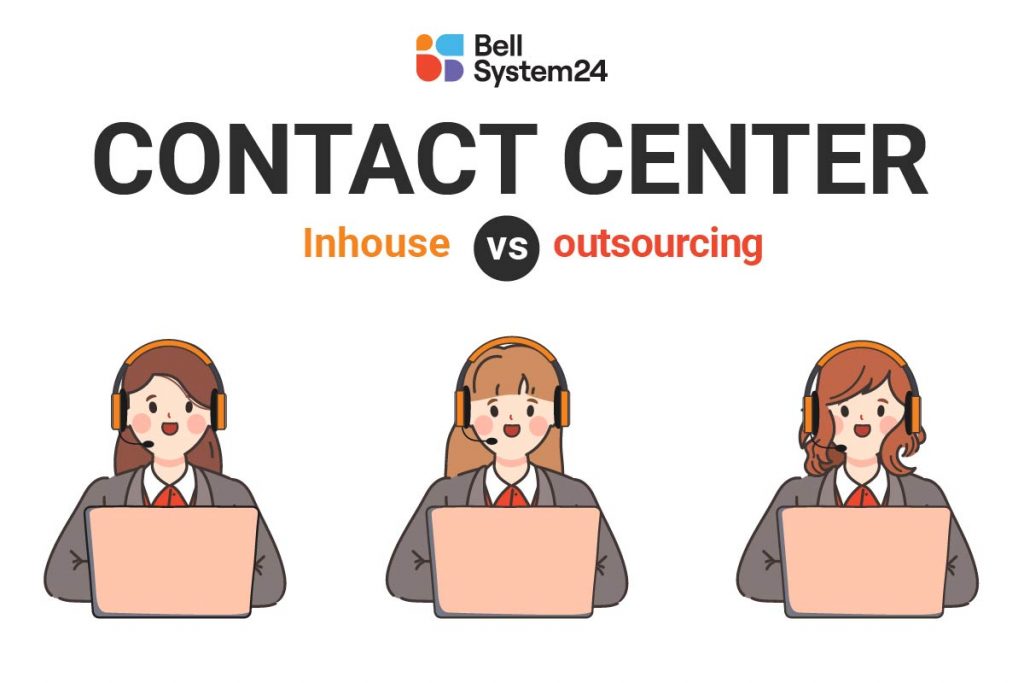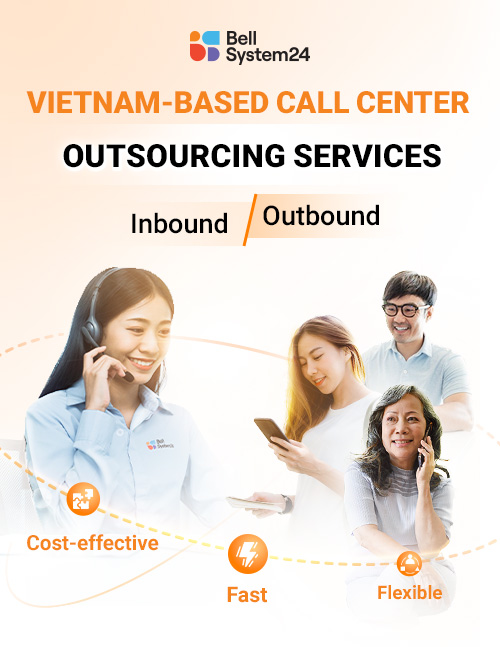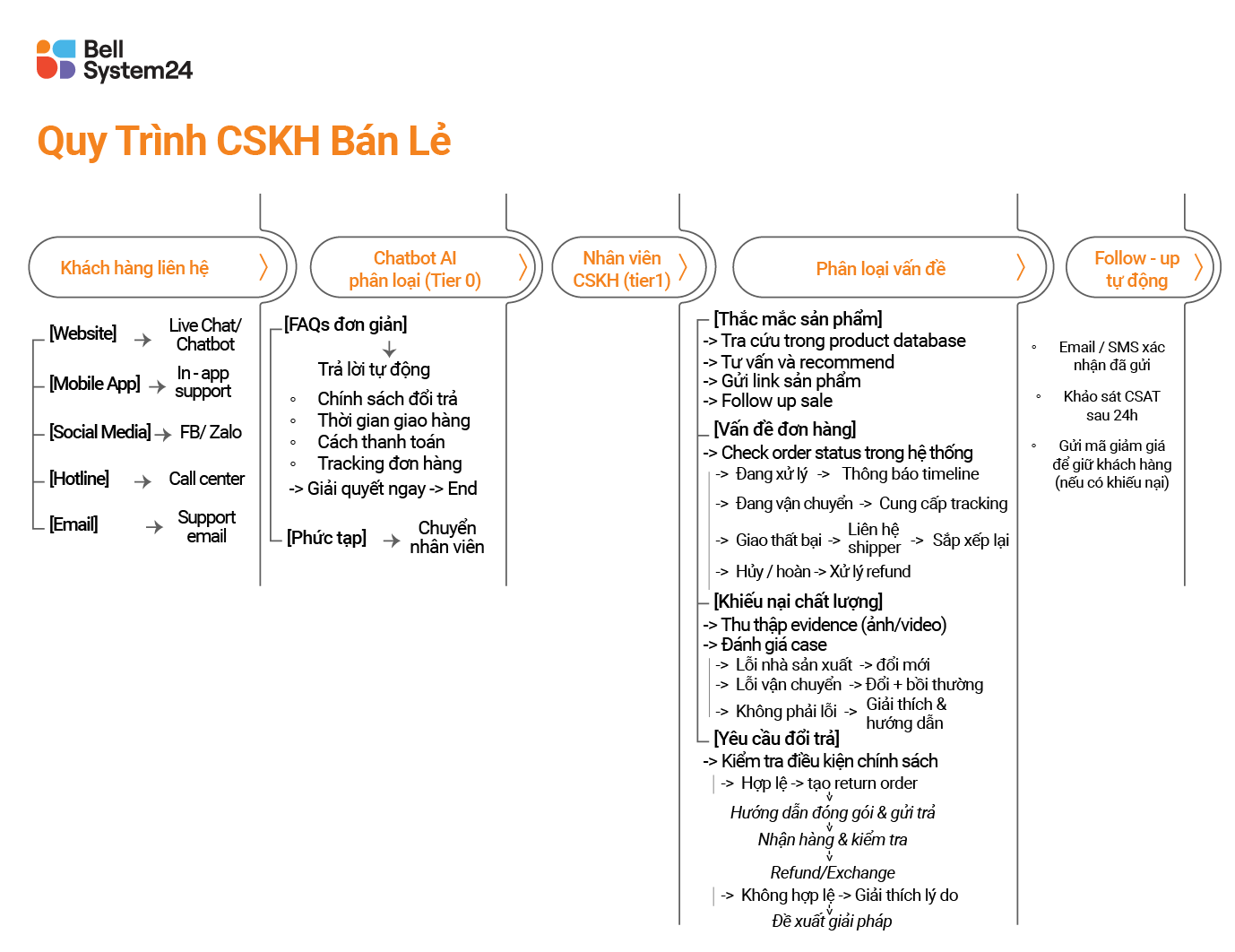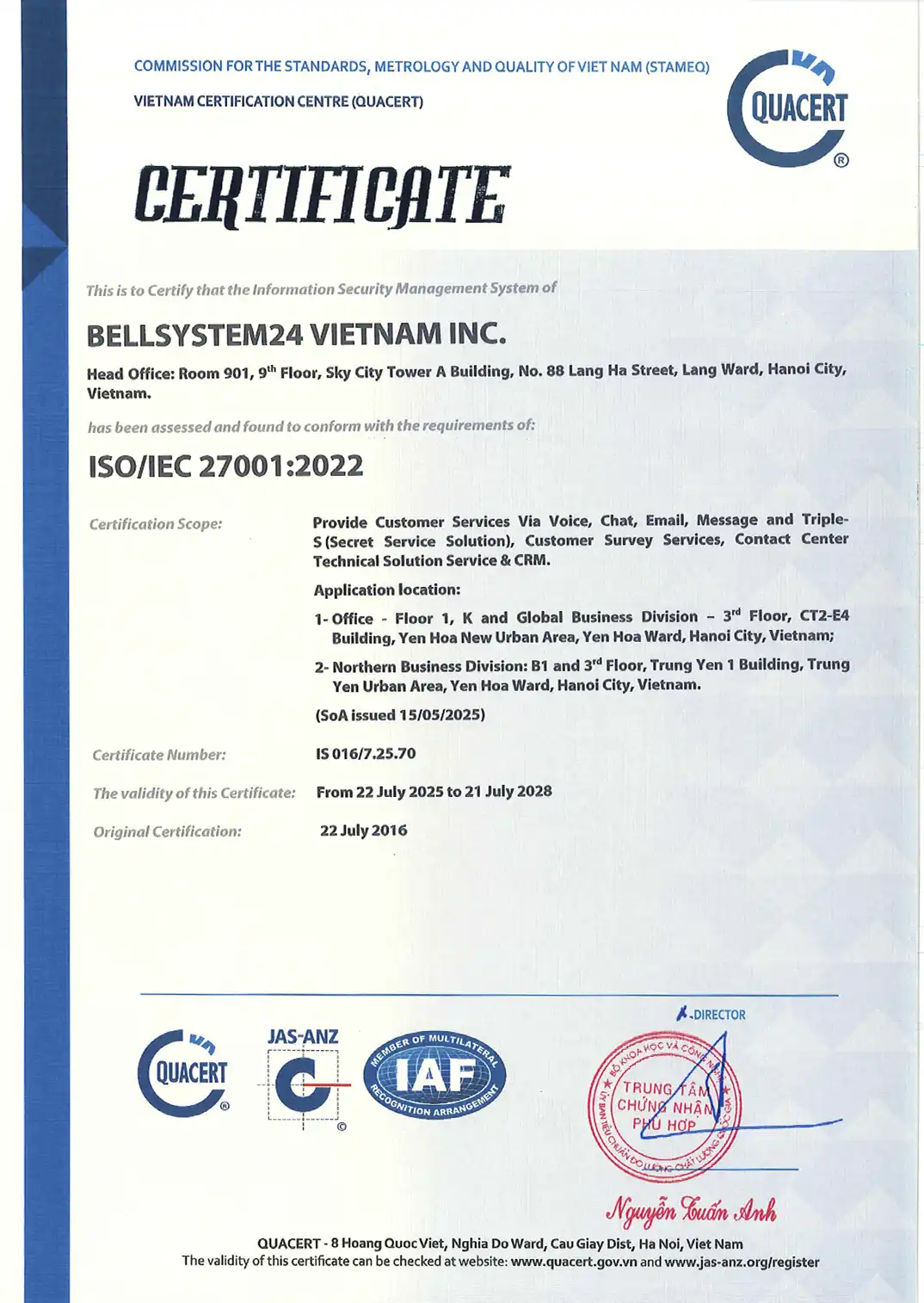In today's digital age, the contact center has become a key factor in determining the success of any business. Choosing between outsourced contact center Whether to operate internally is an important decision that directly affects the budget and business efficiency. Let's analyze the costs and benefits of each model in detail to make the most informed decision.

Overview of two Contact Center operating models
Outsourced Contact Center
This is a business model where a company hires a professional firm to operate all or part of its contact center. The provider will handle recruitment, employee training, technology infrastructure provision, and day-to-day operations management.
In-house Contact Center
This model requires businesses to build and manage the entire system using internal resources, from personnel and technology to operational processes.
Comparison table of operating cost items
| Criteria | Outsourcing | Self-operated |
|---|---|---|
| 1. Initial investment costs (CAPEX) | Almost unnecessary (outsourced units already have the infrastructure in place) | High: investment in IT infrastructure, equipment, furniture, networks, software, office rental |
| 2. Personnel expenses (salaries, social insurance, training) | Included in the service fee (calculated based on FTE or work performance) | Recruiting, training, and managing personnel: time-consuming and costly (average of 8-15 million VND per person per month) |
| 3. Monthly operating expenses (OPEX) | Depending on the service package: approximately 8–20 million VND/FTE/month depending on the business, duration, and requirements. | Includes: salary, electricity, water, internet, software, system operation (usually 15–25% higher than outsourcing) |
| 4. Technology costs (CRM, Call Center System, AI, Cloud, etc.) | The provider is available, often with free basic integration. | Must invest independently or rent SaaS |
| 5. Management and quality assurance costs (QA, Team leader) | Included in the service (internal QA system already in place) | Need to hire additional management personnel, incurring an additional 10–20% in personnel costs. |
| 6. Recruitment, initial training, and rotation costs | Included | Do it yourself, costly and time-consuming |
| 7. Scaling costs (up/down) | Flexible, easily scalable | Rigid, difficult to change quickly, reducing scale would waste infrastructure |
| 8. Risk costs (business interruption, unexpected staff absences) | The outsourced unit ensures continuous service maintenance. | High risk, if personnel resign/suddenly leave, it will affect the SLA |
| 9. Opportunity cost (focus on core business) | Low – businesses focused on their core products | Cao – a business that allocates resources for customer service operations |
| 10. Total Cost of Ownership (TCO) | Lower than 15 – 30% if there is no high demand for personalization | Higher due to hidden costs and ongoing operational expenses |
Outsourced Contact Center Cost Analysis
Low initial costs
One of the biggest advantages of outsourcing a contact center is the low start-up cost. Businesses do not need to make large investments in technology infrastructure, equipment, or office space. Instead, costs are spread out over the duration of service use, making it easier for businesses to control their budgets.
Flexible cost model
Contact center service providers often apply many flexible billing models such as:
- According to the staffFixed costs per FTE for each agent used
- By the number of callsSuitable for businesses with fluctuating engagement levels
- Over timePayment based on the number of hours of service used
- According to performance (Productivity)
- Combining multiple factorsCost-optimized hybrid model
Operational cost savings
Outsourcing helps businesses significantly reduce costs such as:
- Salary and benefits for customer service representatives
- Training and personnel development costs
- Maintenance and upgrade of technology systems
- Manage and supervise operations
Contact Center operating costs
Large initial investment
Building an internal contact center requires a significant initial investment:
- Technology infrastructureThe technology system can account for a significant portion of the costs, depending on the scale and requirements of the business.
- HardwareComputers, headsets, phones, servers
- Office spaceLease space, decorate, set up the work environment
High personnel costs
- Recruitment: Employee search, interview, and onboarding costs
- Salary and benefitsIncluding base salary, insurance, bonuses, and other benefits
- TrainInitial training costs and ongoing training
- ManageCosts for management and supervisory staff
Ongoing operating costs
- Maintenance of technology systems
- Software and hardware upgrades
- Electricity, internet, utilities
- Compliance and security costs
Overall cost comparison
Small and medium-sized enterprises (SMEs)
For small to medium-sized businesses, outsourcing contact centers often saves 30-50% more than operating them in-house. Low initial costs and flexible scalability are significant advantages.
Large enterprise
Large corporations may consider self-operation if they have stable and large customer interactions. However, outsourcing still offers benefits in terms of expertise and advanced technology.
Hidden factors in costs
Opportunity Cost
When operating a contact center in-house, businesses must devote resources and time to management, rather than focusing on core business activities. This is an important hidden cost to consider.
Risk and compliance
Ensuring compliance with information security, privacy, and compliance regulations in a self-operated contact center can be costly and complex. Professional providers typically have the necessary certifications and standard procedures in place.
Flexible scalability
Easily scale up or down according to business needs without additional infrastructure investment.
Conclusions and Recommendations
The decision between outsourcing and operating your own contact center should be based on several factors: company size, budget, development strategy, and the importance of customer service in your business model.
For most businesses, outsourcing contact centers offers significant advantages in terms of cost, quality, and operational efficiency. Not only does it save money, but businesses can also focus their resources on core business activities, strengthening their competitive position in the market.
Contact Bellsystem24 Vietnam for detailed advice on the contact center solution that best suits your business needs and budget. We are committed to delivering optimal solutions that help businesses save costs while enhancing the customer experience.
Bellsystem24 Vietnam – Your Trusted Contact Center Outsourcing Partner
Bellsystem24 Vietnam is the leading contact center service provider in Vietnam with over 20 years of industry experience. We understand the cost challenges businesses face and are committed to delivering the most optimal solutions.
With a team of over 3,000 professionally trained employees, modern technology infrastructure, and flexible pricing models, Bellsystem24 Vietnam has helped hundreds of businesses save up to 40% in operating costs while maintaining high customer service quality.







